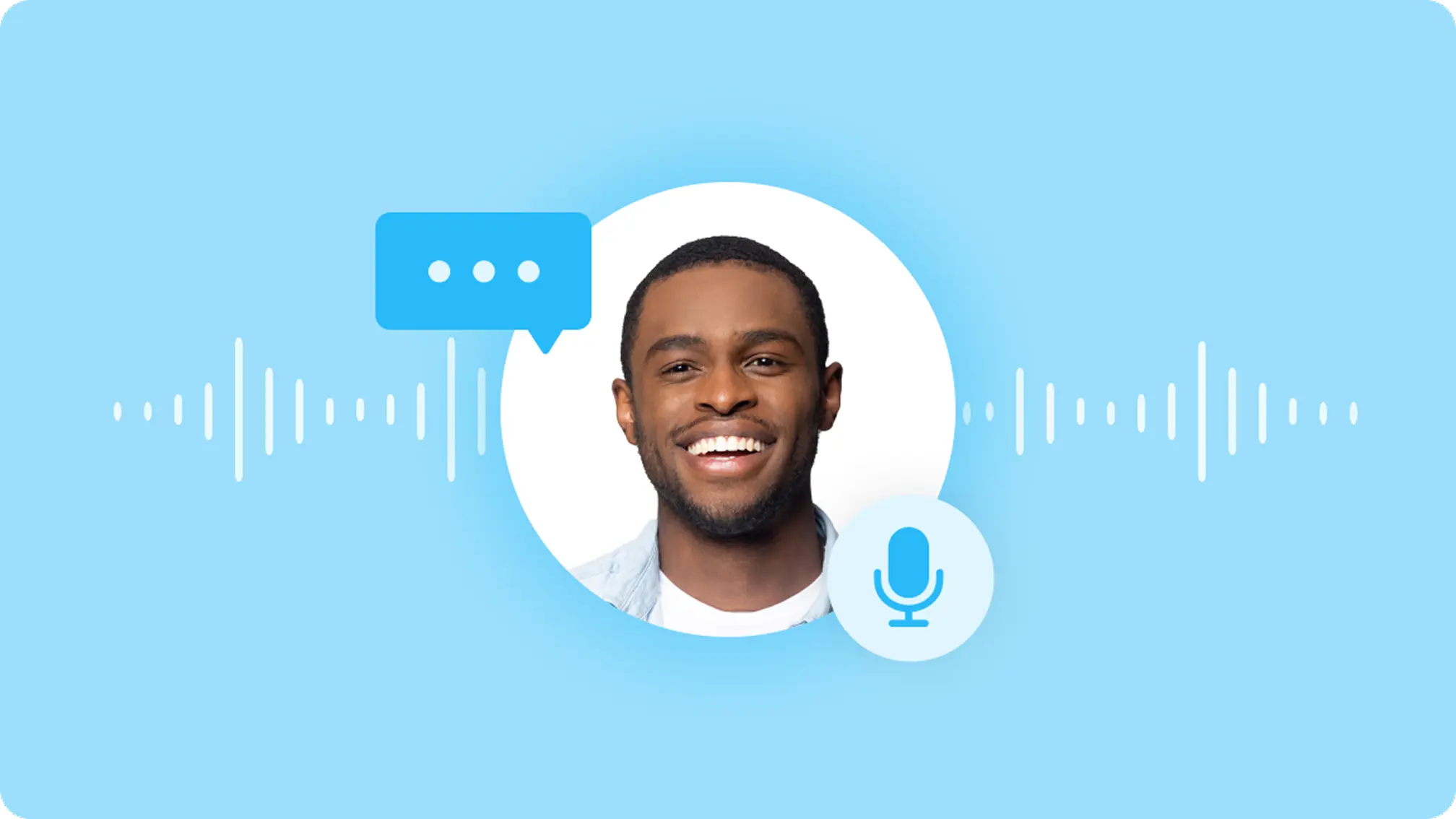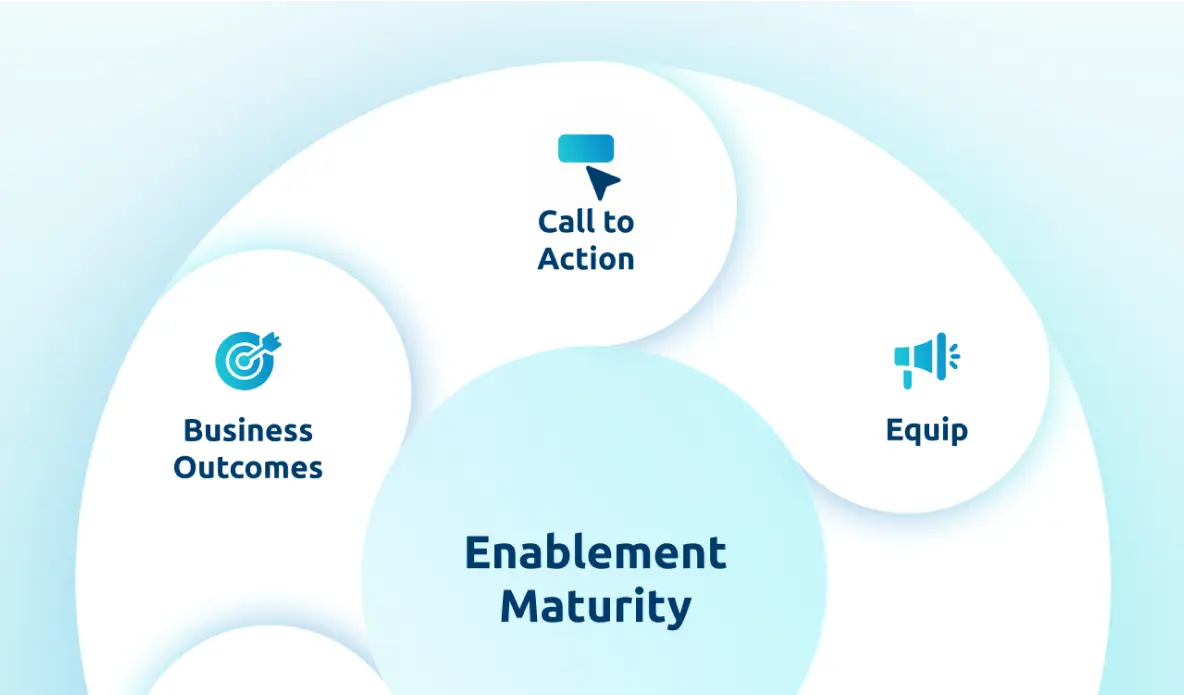According to a study conducted by McKinsey, 72% of respondents experienced management behavior and peer resistance as major barriers to successful change initiatives. So how can you align stakeholders and gain buy-in to drive transformation?
Shawnna Sumaoang: Hi and welcome to the Win-Win podcast. I’m your host, Shawnna Sumaoang. Join us as we dive into changing trends in the workplace and how to navigate them successfully.
Here to discuss this topic is Anna Borbotko, the Sales Enablement Lead for B2B at TomTom International BV. Thank you for joining us, Anna. I would love for you to tell us about yourself, your background, and your role.
Anna Borbotko: Thanks, Shawnna. Very happy to be here today. Talk about enablement. So yeah, my name is Anna Borbotko. I help grow product marketing and enablement teams. I proudly associate myself as a marketer. Product marketing in particular is my passion and craft, but I also love sales. And that’s how I ended up in enablement. I always work for tech companies, big and small for different industries, and also have a failed solopreneurship business in my records.
But at the moment I’m building a sales enablement team from scratch at TomTom. And for those who don’t know TomTom, TomTom is one of the most famous mapping and navigation technology providers globally. A lot of people know us for our consumer business because we were the inventors of personal navigation devices.
But TomTom is a unique company primarily because there are not so many cases known to the world where a company actually successfully transitioned from being a B2C company to actually B2B. From an enablement standpoint, TomTom is an amazingly challenging case because I have to enable TomTom. Two different sales teams that have a completely different sales dynamic.
The velocity of the sales cycle is very different. The product portfolio that we sell is very different and the challenges those teams face are also very different. Then you can start counting how many times I said the word “different”. It’s tough, but I love it.
SS: Absolutely. Well, Anna, thank you so much for joining us. In fact, one of the reasons why we were excited to have you as a guest on our podcast today is because, as you mentioned, you are focused on building out the first enablement team at TomTom. I’d love to understand what were some of the main problems that you set out to solve with enablement.
AB: I think, as I already said, there are two sales teams that are all under the leadership of our CRO who needed to kill this CRO organization. And he did some clever things. And one of them is creating a centralized enablement function. So in terms of the main problems, I think all the enablement teams face is defining enablement at TomTom. Having enablement at your title can be both a curse and a blessing, as I like to say it. A curse, because you’ll get inducted with requests from all directions as people expect that you will solve all their problems, enable them. My biggest fear, when I took on this role, was that my team would just turn into this content production factory, churning endless slides and training materials. So we had to turn this into a blessing. And with the team, we’ve done a lot of research, understanding both sales teams.
We had to sort of put everybody on pause saying like, hey, give us some time to do some homework. So eventually we settled down on a grocery store analogy and how we position ourselves as we say, Hey, our purpose as enablement at TomTom is to organize shelves and ensure that they’re always stocked with the most up-to-date materials.
Most importantly, it’s very easy for you to find and navigate, very quick and confident, which actually became our main problem for now to solve.
SS: Interesting. Now, from your experience, what would you say are some of the key building blocks needed to create a successful enablement strategy?
AB: I’m new to enablement. So whoever is listening to this, please take it with a pinch of salt. Uh, but so far from my experience, I can say there are three things. The first one is doing your homework before you jump into the truck that’s on fire and really distilling the signals from noise, whether it’s external, because nowadays there’s a lot of influence on LinkedIn and there’s a lot of experts sharing their opinion, but also internal, because a lot of people will take it.
Tell you how they think you should be doing enablement. And I think that at that moment you really need to think for yourself, okay, is it really a noise or is it something I can actually take on as valuable advice and turn it into something strategic and valuable? The second one is understanding the real essence of enablement is driving behavioral change.
For me, that was a big hard hit because my impression of that was very different when I started. And changing people’s behavior is the toughest part and especially challenging if you’re really not sure where to start, you will just scratch your head all the time and think, okay, how do I do this? And the last, and I think that’s also one of the most important things is building friends, building friends in the organization because enablement is a hundred percent a cross-functional team.
So without good partnerships. Driving behavioral change is going to be impossible. And earlier this year, I was at the sales enablement collective in Amsterdam and Felix Dmitrikas, I stand by his words. A hundred percent. And that’s, it doesn’t matter where sales enablement sits, what sales need, and what you think they need. It’s all about alignment. And it’s a hundred percent true.
SS: I love that. I love that quote as well. You touched on a few of these, but what are some of the biggest challenges that practitioners can face when building an enablement strategy from scratch? And how did you go about overcoming those challenges?
AB: Oh, that’s a tough question to say too. So I would like to link them to three things, which are process, people, and tools.
The first one is the process. You have to educate, and put some process in place in order to educate your stakeholders. I start preaching saying, Hey, I know enablement is in my title or the title of my team, but actually every external facing role, be it marketing, product, product marketing, customer success, even legal or finance, you’re all doing enablement. And it’s just not explicitly stated in your title. So it is everybody’s responsibility. And the enablement team is there. To orchestrate all of this, so defining the boundaries of your team, and what it is, takes time. It’s a lot of repetition and coaching, and you also need to establish a lot of processes in place in order to get there. So that is challenge number one.
The second one is, as I said, it’s people and I here refer to the team. So setting up your team for success. I think it’s another challenge because I, for example, didn’t hire my team. They were transferred to me from different departments as we started forming enablement. When you inherit a team, it comes with all sorts of challenges because you need to build trust and motivation and convince them that Enablement is the next big thing in this organization.
A lot of times when you inherit those team members, they might not even know what enablement means, and you have to discover that together. In my situation, I was very lucky to have very open-minded team members, and they were very eager to start something new and fresh. And one of my team members luckily also has a lot of training and learning design experience, which is very crucial in enablement. So I have a lot of competent team members, but I can imagine it’s not the case for other companies.
And the third one that I would like to stress, as I said, is tools. I think whether you are being hired as a sort of first enablement hire to build a team from scratch, or you’re already in that role, like what happened to me, I think you really have to set the boundary with your management that there needs to be a commitment from their side, not to invest in this function. Just creating a team and thinking they will fix all the problems doesn’t work like that. There will need to be an investment from a tooling perspective, meaning the minimum you need is at least a learning management system, LMS, and an enablement platform. That’s at least the minimum tool that you need to start with and have a commitment to.
SS: On that note about tools, from your perspective, what role does an enablement platform play in bringing your enablement strategy to life?
AB: I know there are a lot of listeners, especially also in my organizations, we had a lot of debates about this before. They say tools are sort of secondary, we first need to fix certain problems. I like to quote Marshall McLunack, who famously said, hey, we shape our tools and therefore they shape us. So for product marketing or enablement teams, having the right tool stacks is actually very important because it can really help you bring that value to the table, which a lot of those teams are struggling with.
In my personal belief, it is an essential foundation, like your house having an enablement platform, you can’t build a roof or walls because otherwise, your house will collapse. So the same applies here. For example, in my team, when we started, we said three core values that drive everything we do. It needs to be centralized. It needs to be data-driven. And the third one, it needs to be scalable.
Having an enablement platform allows exactly that. And therefore without it, I don’t think we would be successful.
SS: I could not agree more. Tell us a little bit about what the evaluation process was like and ultimately what led you to select Highspot as your enablement platform and how did you align your executive leaders throughout that process?
AB: Oh, that we can write a book about it. So first of all, I think buying an enablement platform is not something that we woke up one day this year. It’s three years in the making. When I was still in my product marketing lead role back then, but at that moment, the timing was just off. We had other pressing challenges to fix and like many organizations, of course, we had issues with keeping our collateral up to date, ensuring that sales have the latest and greatest. But, you know, I compare it to rearranging your family’s closet. It’s not urgent. It’s not a top priority, but the organization and the problems it creates cause silent grief to everyone. And it only sort of builds more friction and friction over time. So year after year, I had this nagging thought that, hey, we need an enablement tool.
The question was when, and so as I became the lead for sales enablement at that time, it was right. And here’s the caveat, of course, having a thought and maybe a nice speech is one thing, but then having a budget is another one. And I’m not a budget holder, so I had to get it somewhere. And so I had to build a business case. So you slowly start talking here and there, like, Hey, I think we need more sophisticated tooling. Here’s the benefits it can bring. And it can be quite challenging because you will face a lot of resistance. People don’t understand it. People know it will probably require a lot of money. So people don’t want to invest.
So the best advice I can give to enablement practitioners or product marketers who face the same challenge is don’t follow the finance lead because they will mostly tell you to build a business case around cost saving. Take destiny in your hands and actually focus on the story saying that enablement is actually a revenue-generating engine.
Because when you build a business case, typically they will say, Hey, if you save time, or if you save effort of the sellers, let’s just say, by 15 minutes a day, you generate X amount of saving, but in reality, nobody’s going to fire salespeople. So the cost will be on top of the personnel costs, right?
So the best way you can say is that, hey, I can actually make my sellers more productive by. Freeing up 15 minutes of their day. And if you multiply it by the number of reps that you have, you already have a pretty solid business case to say that, Hey, actually, if we’re going to generate revenue, yes, it’s going to cost, but that’s an investment. And that investment will need to unfold itself over time. And you can again, build it over year after year, depending on how much you want to do it. But I would highly recommend considering the two, and three-year timeline in order to prove itself.
SS: I love that approach. And so I know you’re just getting started with implementing a new platform and a lot of your enablement programs, you’re just getting off the ground running for the first time. I’m curious, how do you plan to drive adoption and really build excitement and momentum for your enablement programs amongst the sales teams that you support?
AB: So I am fortunate enough that I have a lot of change management background in my career like I’ve done a lot of these launches in the past. And then by being a product marketeer, I have my whole ammunition ready to sort of make it a successful launch. So I think there are some best practices out there that we take, which is, Hey, we’re creating a champion group of sellers, customer success teams, as well as marketers who join us. And we try to engage with them. We try to tease them. We try to get the input as fast as possible. And the other thing is, you can go the route of doing it bottom up.
But again, I’m fortunate enough that my management is supporting me with this. So therefore I’m also doing it both ways. So from bottom to up and vice versa. So I highly recommend that because that way you can get it much faster and it will have a better impact. I really am a great believer, and that’s my product marketing speaking here, in micro launches. So what we approach, we’re going to be taking is that we are not going to wait too long with launch. We’re gonna launch a very basic functionality. And then we start sort of building micro launches on top of that. So it will have a lot of phases.
Yes. It’s a lot of extra work maybe because you need to communicate and proactively do a lot of things. But I do believe that because the platform is very powerful and if you sort of bump it all together at the same time, it might lose some valuable things that we want people to start using or seeing.
So therefore I really believe that by doing it on the micro levels, we can actually have a much bigger impact.
SS: So moving ahead, as you are looking forward, what are you hoping to achieve next as you continue to build out the enablement team at TomTom?
AB: So I want to see my enablement vision come to life. That vision is that I want my sellers to find anything that they need when it comes to training onboarding or collateral in a maximum of three clicks. I think we’re almost there and the enablement platform will help us get there completely. I just need to take our time to really make it complete. So that’s one.
I really look forward to seeing how we can replicate the same success, not only for our internal sellers but also for partners. And eventually, I also want to see that we can turn it not just into sales enablement, but a revenue enablement function where they can also focus on customer enablement.
So we’re only starting. There’s some excitement. Let’s say it’s the vision that I have for the future, but for now, I’m really focusing on the very first foundational bit, which is sales.
SS: Well, I can’t wait to see all that I know you will accomplish at TomTom. I’m very excited for you. Last question for you, Anna, for other companies looking to invest in enablement for the first time, what’s maybe one piece of advice you would give them to set them up for success as they get started?
AB: Commit. For real, commit. If you build it from scratch, see it as a revenue engine, not a cost. If you have the right people who can do it internally, or you have to hire, the impact that enablement can have on the performance of your teams is huge, but you will need to give it time to unpack. So commit and commit for real and prepare to invest. That’s my advice. I love that. I think that’s fantastic.
SS: Well, Anna, thank you again so much for joining us today. I really appreciate your insights.
AB: Thank you so much for having me.
SS: To our audience. Thank you for listening to this episode of the Win-Win podcast. Be sure to tune in next time for more insights on how you can maximize enablement success with Highspot.




